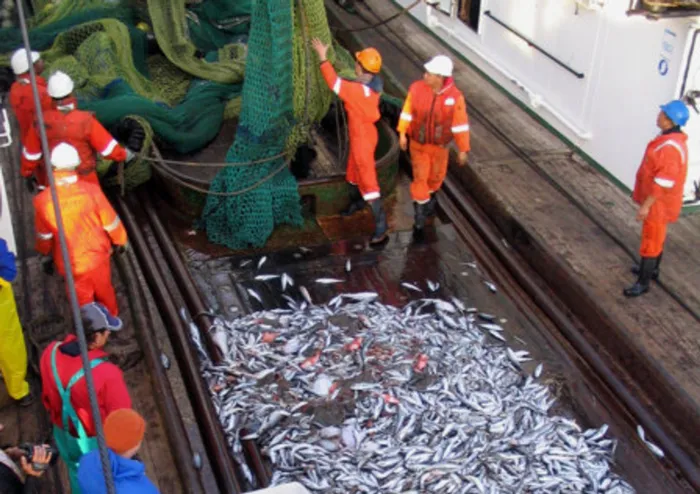Hake industry survives scrutiny

Picture: John Yeld. Picture: John Yeld.
South Africa’s deep-sea hake trawl industry, worth as much as R1.9 billion on the European market each year and employing 6 500 people, is well managed and will keep its international marketing certification for now.
But the industry and government that co-manage this valuable white fish resource have not yet met all the conditions for the product’s continued Marine Stewardship Council (MSC) certification that comes up for full renewal in 2015.
There are still four “open conditions” that need to be met, with tight deadlines during the next 10 months.
Two of these conditions relate to a scientific study to determine and manage the impacts of this fishery on the benthic habitat (the ocean’s bottom surface), and to the requirement for a comprehensive review of significant by-catch species – untargeted species like sharks, some of which are kept and some discarded.
The MSC’s fishery certification programme and seafood eco-label “recognise and reward sustainable fishing”.
“We are a global organisation working with fisheries, seafood companies, scientists, conservation groups and the public to promote the best environmental choice in seafood,” its website states.
There were fears that the year-long management debacle with South Africa’s fisheries research and patrol fleet – which is still not resolved – was putting the certification of hake, and hence jobs and exports, at risk, particularly because of cancelled stock survey voyages.
But at function yesterday hosted jointly by the MSC, the SA Deep Sea Trawling Industry Association and the Department of Agriculture, Forestry and Fisheries, it was announced that the MSC’s latest annual surveillance report had confirmed that the fishery was well managed and “continues to perform in line with the world’s most rigorous environmental certification requirements”.
A MSC audit team of international experts that visited Cape Town last month reported “significant progress” in all areas. They were particularly pleased to find that the tough stock rebuilding measures were working, and that the stock had already reached a target level planned for 2016.
“In past years, the hake industry has agreed to significant quota reductions based on scientific recommendations to rebuild deep-water hake stocks,” a press release reads. “The initiative is now paying off as quotas can be slowly increased again to preferred target levels.”
Roy Bross, secretary of the trawl industry association, said European markets attached great significance to the MSC logo on fish products.
Johann Augustyn, the department’s chief director of fisheries research and development, said that this year’s hake quota for both the inshore and offshore fisheries was 156 000 tons – the third-highest it had been – and was up from 145 000 last year. Augustyn, pictured, said only one significant but non-critical research survey had been missed because of vessel problems last year. “We are serious about dealing with these issues,” he said.